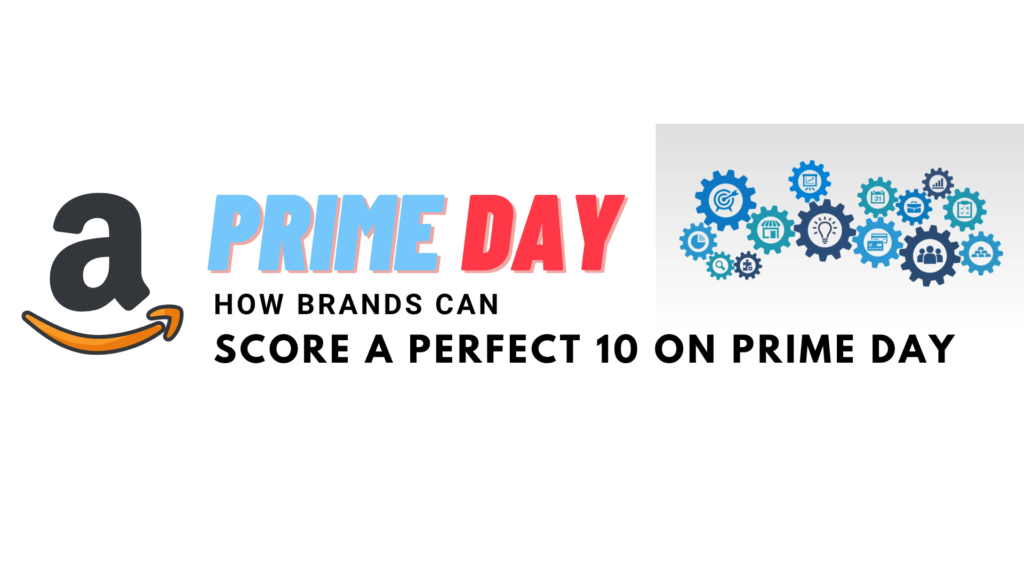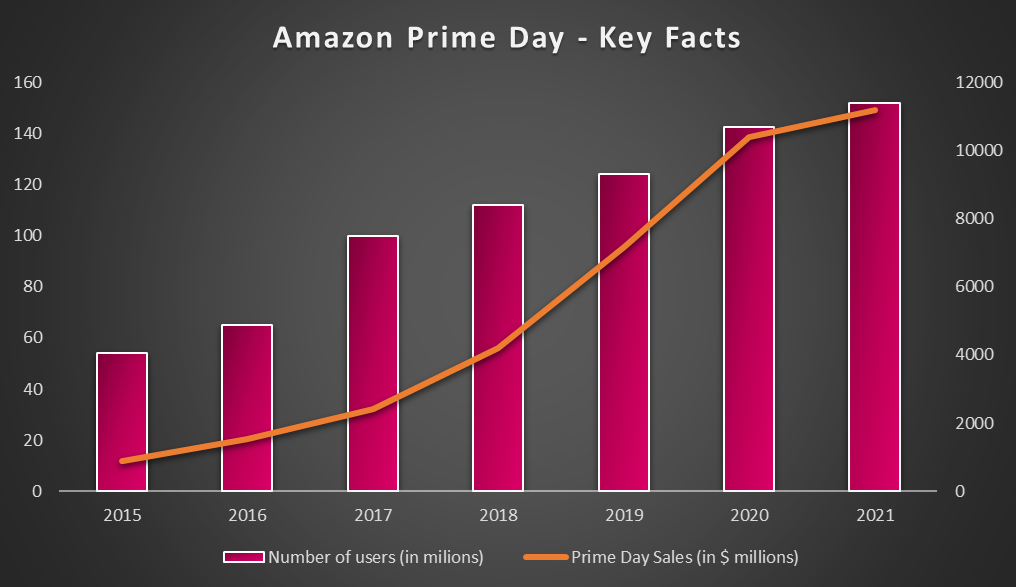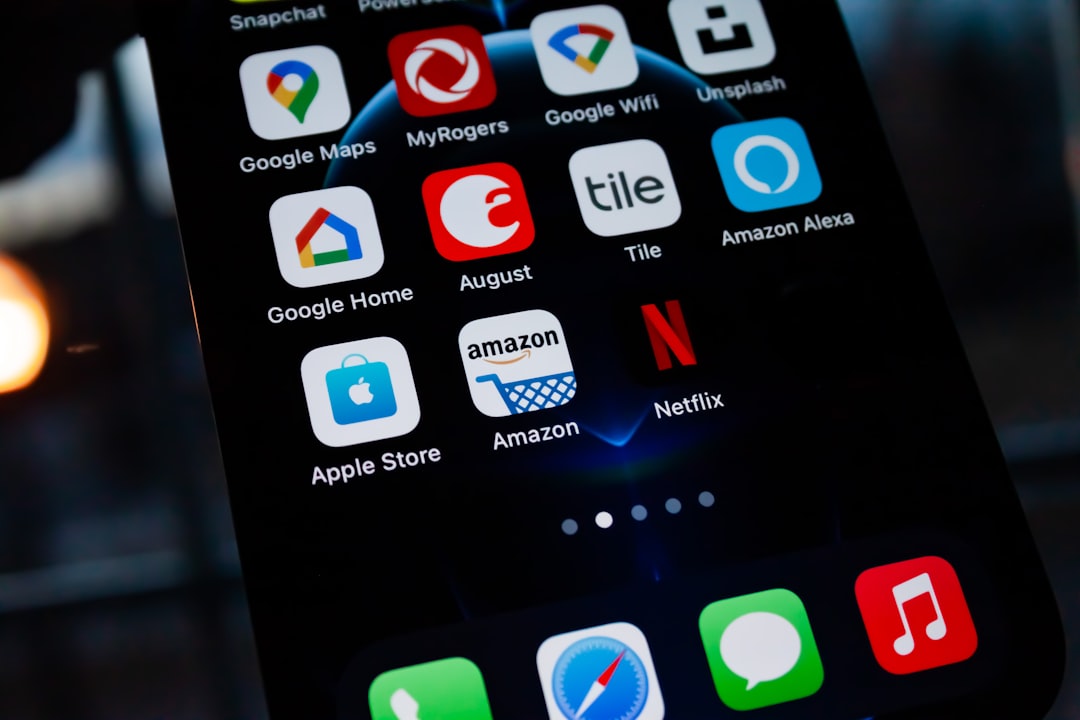Amazon Prime Day 2022: The countdown begins
The countdown to Amazon Prime Day 2022 has already begun. This summer’s mega summer sale will take place on Tuesday, July 12 at 3 a.m. Eastern Time through Wednesday, July 13. This is a return to the typical mid-July slot for the deals extravaganza after the pandemic disruptions.
Amazon saw a 54% year-on-year jump in sales for Prime Day in 2020, but that figure shrank to 7% growth for the following year, which may be due to pandemic related buying patterns. It will be interesting to see the year-on-year sales growth during Prime Day 2022 as there are challenges around inflation, consumer spending, supply chain issues as well as macroeconomic pressures related to the war in Ukraine.

For a quick recap into the origins of Prime Day – it debuted in 2015 as part of Amazon’s 20th anniversary celebration. Almost at once, it became the most important shopping day of the year for the online retailer. The shopping event now takes place for 48 hours, up from 24 hours when it first began. The event is only open to Amazon Prime members of which there are currently 200 million Amazon Prime subscribers worldwide. In the USA alone, the number of members of Amazon Prime is projected to reach 153 million users by 2022, up from 142.5 million in 2020.
When is Amazon Prime Day 2022?
• Amazon Prime Day 2022 will take place on Tuesday, July 12 and Wednesday, July 13.
• Many early Prime Day deals are already live in the days leading up to Prime Day 2022
Marketers and shoppers are lining up for a win-win outcome in the already supercharged Amazon universe. ‘Prime Day’ is the summer version of fall-themed shopping events such as Black Friday, Cyber Monday.
Amazon Prime user growth in the US:

How brands can score a perfect 10 on Prime Day
To perfect your Prime Day strategy, you must understand what shoppers are looking for. Electronics and fashion and beauty products are among the most popular items prime day shoppers want to buy, according to a recent survey. Therefore, if your brand sells products in these categories, you have a great chance of reaching prime day shoppers.
1. Optimize your Amazon PDP (Product Detail Page)
Prime Day supplies an excellent opportunity to evaluate whether your efforts to optimize product content are finally paying off. Through Amazon’s A+ feature, brands can become the shining beacon that shoppers are looking for – providing them with unique brand stories and highlighting the features of their on-sale products.
2. Personalized Experience
Amazon’s Prime Day offers brands the opportunity to further enhance customer experience and sales through ecommerce personalization. Amazon offers Deals of the Day and personalized recommendations based on user data. Their recommendations may include items that buyers have previously viewed or items that are commonly bought together. In addition, they can offer different deals to different users based on their location or past purchase history. By tailoring the online shopping experience to each individual user, brands selling on Amazon during Prime Day can increase sales and keep their customers coming back for more.
3. Advertising on Prime Day
During Prime day, promotions are a powerful tool for building brand awareness because they help to build upon existing foundations brands have created on Amazon. With 9.5 million active sellers worldwide, Amazon is the world’s largest eCommerce platform, and PPC advertising can help you stand out! By following this strategy, we can generate traffic as well as improve our organic rankings over time.
On Prime day, brands should find the products and assortments that will drive sales. Your portfolio can benefit from these best seller brands by creating a Halo Effect. Understand that not all promotions will directly lead to more Sales during Prime Day, but the return on investment will come even beyond Prime days well into the Holiday season. Brands can also use Lightning deals to liquidate excess inventory or seasonal surpluses and to generate buzz around brands.
4. Amazon Keyword Research to Identify Top Trending Searches
Keyword research is essential for Amazon success – at the ASIN (Amazon Standard Identification Number), brand, and category levels. In this process, Amazon listings, Amazon PPC campaigns, and Amazon affiliate marketing efforts are perfected by identifying and using real Amazon customer search terms (keywords). Businesses can increase the visibility of their products on Amazon by targeting the right keywords. Therefore, Amazon keyword research can be an effective marketing tool for driving sales and traffic – on Prime day and beyond!
When the day of Prime Reading arrives, all leading brands will already know what keywords and bids are going to work for them. They can use this strategy during their promotions to win conversions!
5. Get Social: Think Beyond Amazon
Embrace the conversation and make your brands a part of it!
To create an authentic, cohesive brand story, brands must use the power of social media. This is where engaging emails, brand websites, social media posts, and collaborations with influencers/KOLs via blogs, vlogs, and twitter all contribute to a coherent, compelling story.
Lately, we have seen brands who are increasingly using social media to drive sales on Amazon’s marketplace leading up to Prime Day and beyond. This is especially true for FB, TikTok and Instagram, which have become essential platforms for Gen Z and Millennial shoppers. By promoting specials and discounts on these platforms, brands can drive Amazon sales in the short term. In addition, email and social campaigns can also be used to promote Amazon deals to subscribers and followers.
6. How to Interpret Prime Day Findings and Performance
- Monitor real-time own vs. Competitors’ strategies on Price, Promotions, and Deals to remain competitive. Invest in AI-based pricing solutions to tweak prices automatically.
- Amazon Prime Day is the pre-cursor to the incredible Amazon Sales Opportunity that runs throughout the year. Brands should invest in technologies and enabling powerful Analytics & Insights and examine their Prime Day data including Share of Voice, Competitor Analysis and Benchmarking, PPC campaigns, bidding strategy so they can make improvements based off this information in future efforts
- Brands should Monitor Returns, Reviews and Ratings and Customer Feedback once Prime day is over gauge performance and fix any issues.
- Evaluate Forecasting to improve Sales and Inventory, accurately meet demand while still being profitable, prevent costly Lost Buy Box. Models based on machine learning can predict Amazon’s erratic demand patterns and random probability distribution.
Conclusion:
The Prime Day event can be a wonderful opportunity for brands to increase sales, but it takes a lot of planning and effort to maximize sales. We hope this post has given you ideas to start planning your own successful Prime Day campaign.
Are you excited about Prime Day 2022? I know I am!



